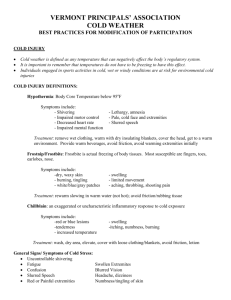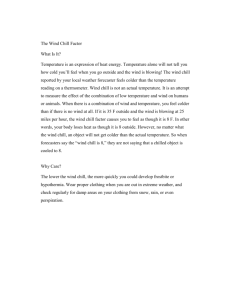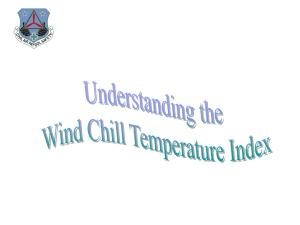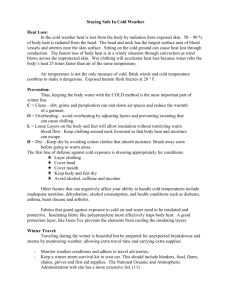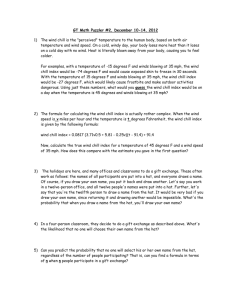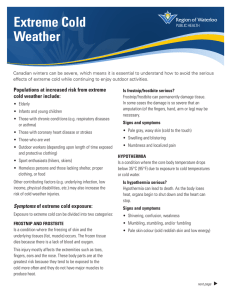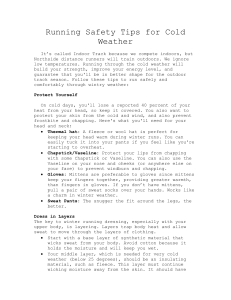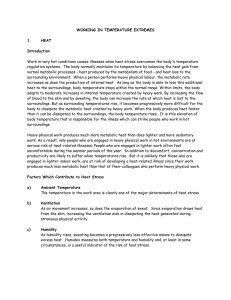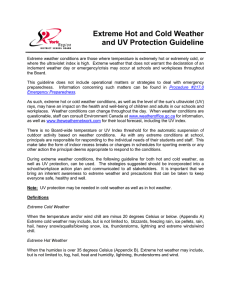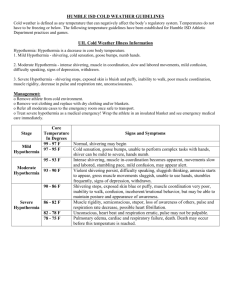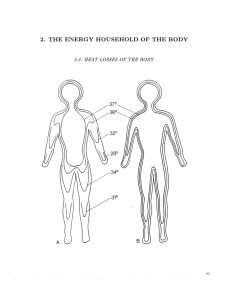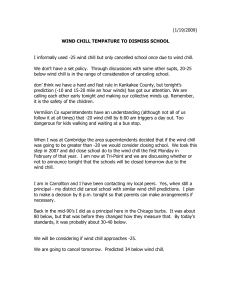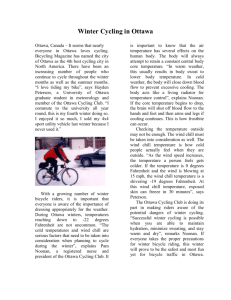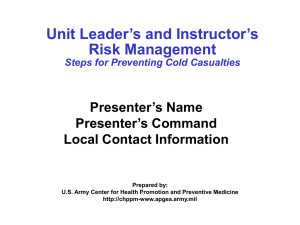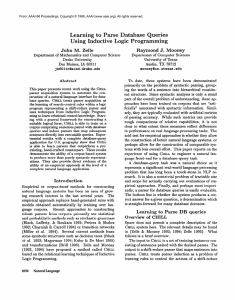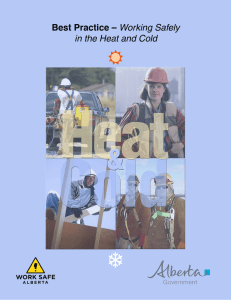Cold Environments
advertisement
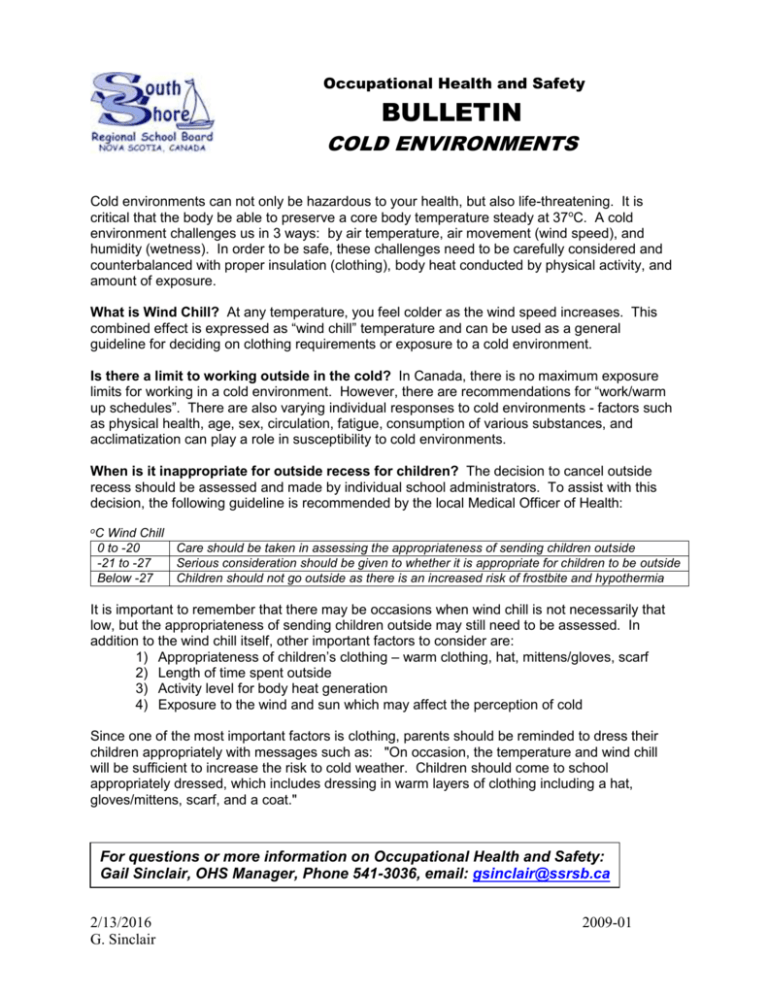
Occupational Health and Safety BULLETIN COLD ENVIRONMENTS Cold environments can not only be hazardous to your health, but also life-threatening. It is critical that the body be able to preserve a core body temperature steady at 37oC. A cold environment challenges us in 3 ways: by air temperature, air movement (wind speed), and humidity (wetness). In order to be safe, these challenges need to be carefully considered and counterbalanced with proper insulation (clothing), body heat conducted by physical activity, and amount of exposure. What is Wind Chill? At any temperature, you feel colder as the wind speed increases. This combined effect is expressed as “wind chill” temperature and can be used as a general guideline for deciding on clothing requirements or exposure to a cold environment. Is there a limit to working outside in the cold? In Canada, there is no maximum exposure limits for working in a cold environment. However, there are recommendations for “work/warm up schedules”. There are also varying individual responses to cold environments - factors such as physical health, age, sex, circulation, fatigue, consumption of various substances, and acclimatization can play a role in susceptibility to cold environments. When is it inappropriate for outside recess for children? The decision to cancel outside recess should be assessed and made by individual school administrators. To assist with this decision, the following guideline is recommended by the local Medical Officer of Health: oC Wind Chill 0 to -20 Care should be taken in assessing the appropriateness of sending children outside -21 to -27 Serious consideration should be given to whether it is appropriate for children to be outside Below -27 Children should not go outside as there is an increased risk of frostbite and hypothermia It is important to remember that there may be occasions when wind chill is not necessarily that low, but the appropriateness of sending children outside may still need to be assessed. In addition to the wind chill itself, other important factors to consider are: 1) Appropriateness of children’s clothing – warm clothing, hat, mittens/gloves, scarf 2) Length of time spent outside 3) Activity level for body heat generation 4) Exposure to the wind and sun which may affect the perception of cold Since one of the most important factors is clothing, parents should be reminded to dress their children appropriately with messages such as: "On occasion, the temperature and wind chill will be sufficient to increase the risk to cold weather. Children should come to school appropriately dressed, which includes dressing in warm layers of clothing including a hat, gloves/mittens, scarf, and a coat." For questions or more information on Occupational Health and Safety: Gail Sinclair, OHS Manager, Phone 541-3036, email: gsinclair@ssrsb.ca 2/13/2016 G. Sinclair 2009-01
